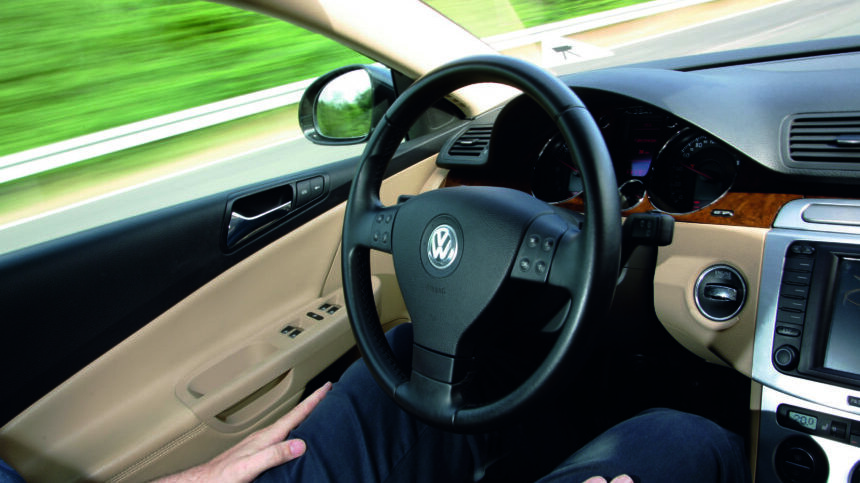The long road

Driverless cars have made many headlines over the past year. There are a number of trials planned, along with many already underway and numerous organisations and government regions are supportive of this technology and the driverless car concept, but what is it all about?
For many, the looming spectre of massive population growth, pollution and a road network like the UK’s can only be met by more personalised transport solutions, such as one or two-person ‘pods’. These negate the need for us to own a vehicle and reduces the inefficient phenomenon of cars being utilised by just one person.
Some concepts, such as that by F1 designer Gordon Murray who suggested that smaller, narrower vehicles would allow two vehicles to occupy each lane, are not so outlandish when you consider General Motors has been researching the environment for its EN-V pods. These pods offer ‘interesting’ use of collision avoidance technology and vehicle-to-vehicle communications – some negating the delays of traffic lights. Nissan too has developed sensors and software that emulates a ‘shoal of fish’, with automated devices communicating with each other to flow together in a common direction, yet keeping a set distance from each other.
Honda has developed a modular vehicle concept in which the user could carry out the school run in its small vehicle and, having dropped the kids off at school, the rear seat module is swapped for a load carrying module for the user to carry out other tasks as a light commercial vehicle (LCV).
Beliefs
One of the underlying beliefs behind much of this work is the varying statistic of how little each vehicle is utilised. A commonly quoted number is that each car is only used for four per cent of the day.
A more compelling statistic is that 90% of vehicle accidents, which result in death or serious injuries, are due to human error. So, there is a logical progression through existing and evolving technologies such as advanced driver assistance systems (ADAS) towards ‘highly automated driving’.
This involves a near seamless transition from driver to engine control unit (ECU) management, with the safety systems supporting the driver, whilst managing the journey within certain parameters. These parameters vary, with some governments planning certain sections of roads where automated driving is allowed. Others foresee the vehicle being able to drive itself, but requiring driver input on demand if conditions get too challenging. Some see the vehicle sensors alone coping with the road conditions and lane positioning to allow for the inaccuracy of global positioning system (GPS), but others see vehicle-to-vehicle communication and enhanced GPS as the enabler of autonomy.
Progression
Logically, we can expect a natural progression as technology evolves, with circumstances where the car can control itself becoming more frequent. Today, we see traffic assist employing adaptive cruise control and lane keep assistance to maintain a distance and to stay within its lane. Meanwhile, Honda has released its predictive, adaptive cruise control that provides a degree of anticipation and prediction of other vehicles moving into the lane ahead.
These will evolve. With original equipment manufacturers (OEMs), vehicle manufacturers and of course Google developing technologies – solutions will emerge and converge. Autonomous emergency braking (AEB) is already having an effect, not only in preventing injuries, but in reducing total losses. Fitment levels are increasing; the new VW Passat, Mazda 2 and the Hyundai Genesis are all amongst new models offering AEB alongside the Land Rover Discovery Sport, which won What Car’s Car of the Year 2015 Safety Award.
Free
It will be a long road, and possibly a bumpy one, before we see the utopian world of driverless, accident free cars.
For now, we need to keep pace with what is here currently, and what is emerging. As repairers there are, and will remain, a need to handle more electronic sensor sophistication. Sub-contracting the relevant diagnosis and reinstatement of these systems can make cost assessing and accurately forecasting key-to-key times challenging to say the least. The first step is to perhaps look at what brands, models and systems are common, and preparing training and equipment to meet your own, and your work provider’s needs.
I think it’s very likely time spent researching training, tools and equipment for the electronic trends that you’re increasingly facing, will be time well spent.








